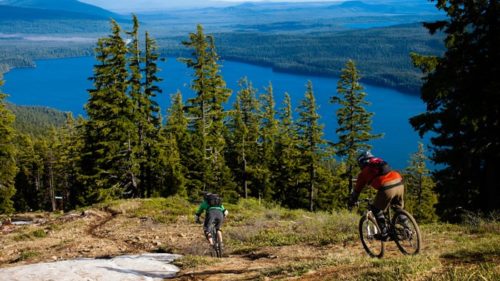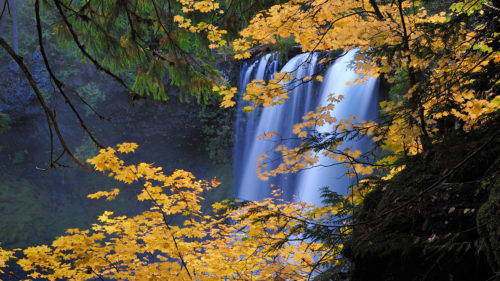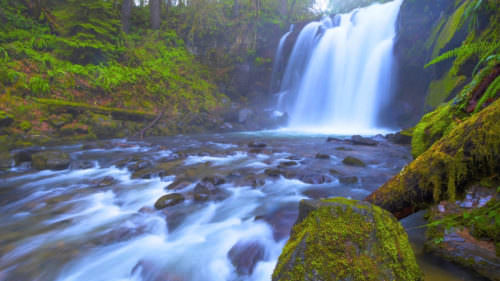While most hikers in Oregon are busy heading for the Gorge, up to the mountains or over to the Coast, there is some hiking gold in the mid- to southern Willamette Valley that remains largely untapped. Remote trails provide rare glimpses of native and migratory wildlife, and urban paths lead to unexpectedly verdant forested oases. From family-friendly riverfront strolls to thigh-pumping ascents into the old-growth shade of semi-secret recreation areas, here are some spots that I particularly enjoy hiking around Salem, Eugene and the in-between.
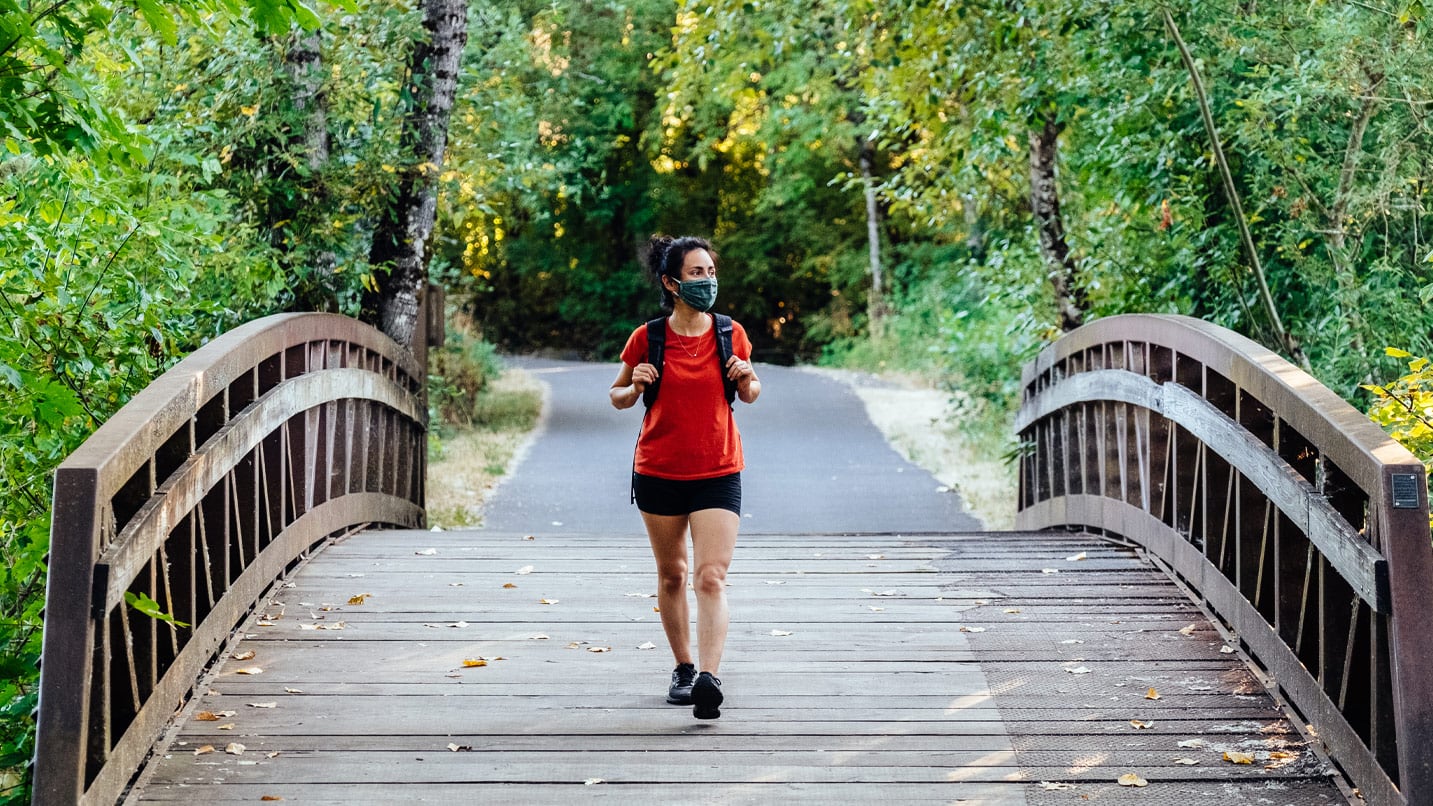
Riverfront Trails in Downtown Salem
Salem’s crown jewel of urban outdoors, Minto-Brown Island Park spreads out over 1,200 acres of lush, open and wooded areas on and between the Willamette River just south of downtown. It’s not just the biggest park in Salem, it’s larger than Central Park in New York City. There are 29 miles of paved and unpaved multiuse trails that showcase a surprising level of biodiversity and more loop options than you can shake a stick at.
A big part of the park’s greatness is just how customizable the hiking experiences can be: Paved, unpaved, woods, water, 1 mile or 15. Because you can access Riverfront Park and, from there, Wallace Marine Park, you can hike just shy of forever if you wanted. If you’re like me and you really feel like living your best life, grab food and drinks downtown. If you do, the maps, navigation kiosks and well-marked loop junctions throughout the park will get you back to the trailhead, even with any navigational difficulties.
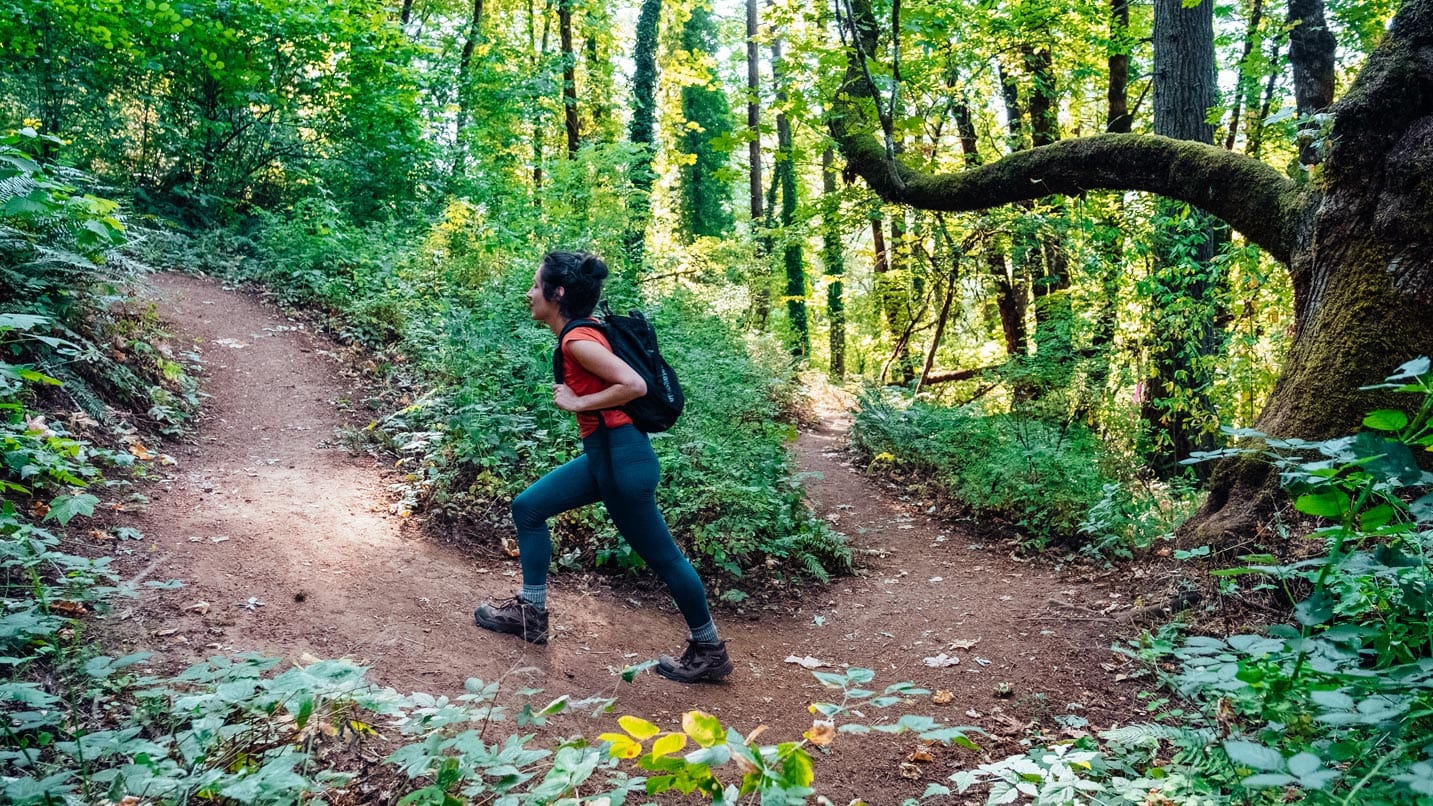
Pocket Nature Trails in South Salem
Two quiet and easy-to-get-to trails that I’ve enjoyed while staying in town are tucked away into separate but neighboring forested areas in south Salem. With heavily mossed boughs of big-leaf maple, craggy oaks, stately Doug fir, deep ravines and fern-lined paths, the Skyline Trail explores an area that’s home to numerous elements of a quintessential Northwest forest. A few blocks away, the Croisan Scenic Trail steadily descends through a grab bag of wooded scenery with homes on either side. The allure of Croisan Creek is the constantly shifting elements of scenery. Enjoy the variations in forest age and type, and see a traditional hiking path give way to a haunting section of abandoned roadway. Throw in the exercise element of the elevation loss, then gain, and you get an urban outing that ticks all the in-town hike boxes and then some.
If you’re willing to walk the few blocks in between, you can combine both trails into one 3.4-mile excursion. It’s also the route I would recommend, because while the Skyline Natural Area Trailhead has plenty of public parking available, the Croisan Scenic Trailhead begins at the end of a residential drive, with limited on-street parking. Combining the two into one walk is the best way to get the full experience while being a courteous neighbor.
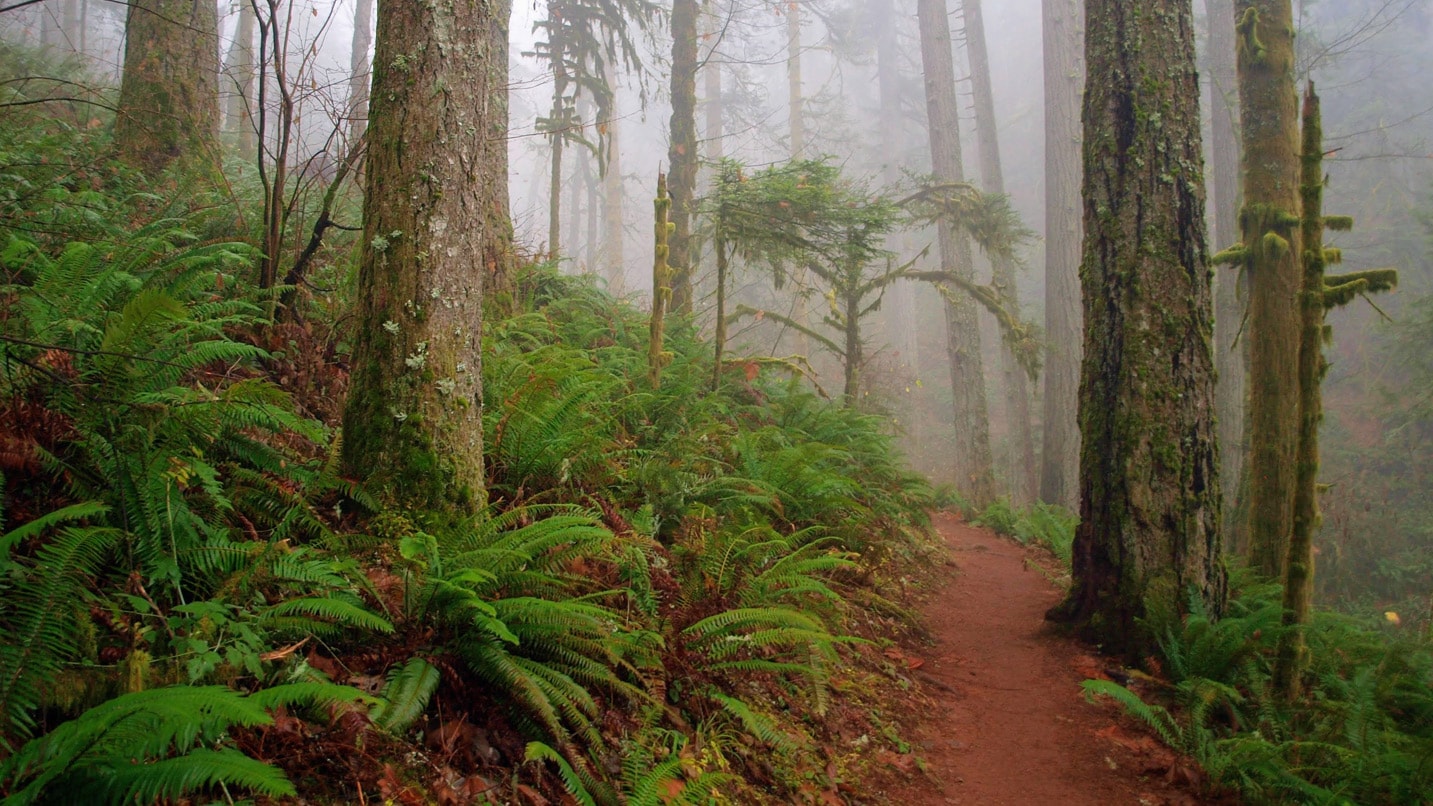
A Stroll Through New and Ancient Forests in Corvallis
The McDonald and Dunn Research Forests inhabit a unique chunk of land northwest of Corvallis. Hikers can explore an impressive array of habitats including dry oak woodlands, forest plantations, flourishing riparian areas and rare old-growth reserves. Because many parcels are managed specifically to better understand how and why forests do what they do, it’s an excellent place to learn more about one of the things you love the most: the Pacific Northwest forest. Brochures, interpretive signage and online factoids abound, so you can go as deep as you like. Or you can just go for a hike in some outstanding woods. No judgment here.
For many hikers, including myself, the ultimate brass ring is unfettered old-growth forest. The Old Growth/New Growth loop is a 2-mile semiloop that provides two vastly different hiking experiences in one outing. You’ll be able to get a feel for how a research forest looks and behaves, and saunter through an ultra-inspiring swath of primeval forest. The new-growth section possesses an eerie quality, with the trail guarded on all sides by perfectly spaced younger trees, raising their branches toward the sky in unison and sharing the same fluorescent cloak of lichen. You’ll then round a particular corner and, as if by magic, you’re in an ancient forest that’s home to 200-plus-year-old trees and a whole lot of deep-forest mood.
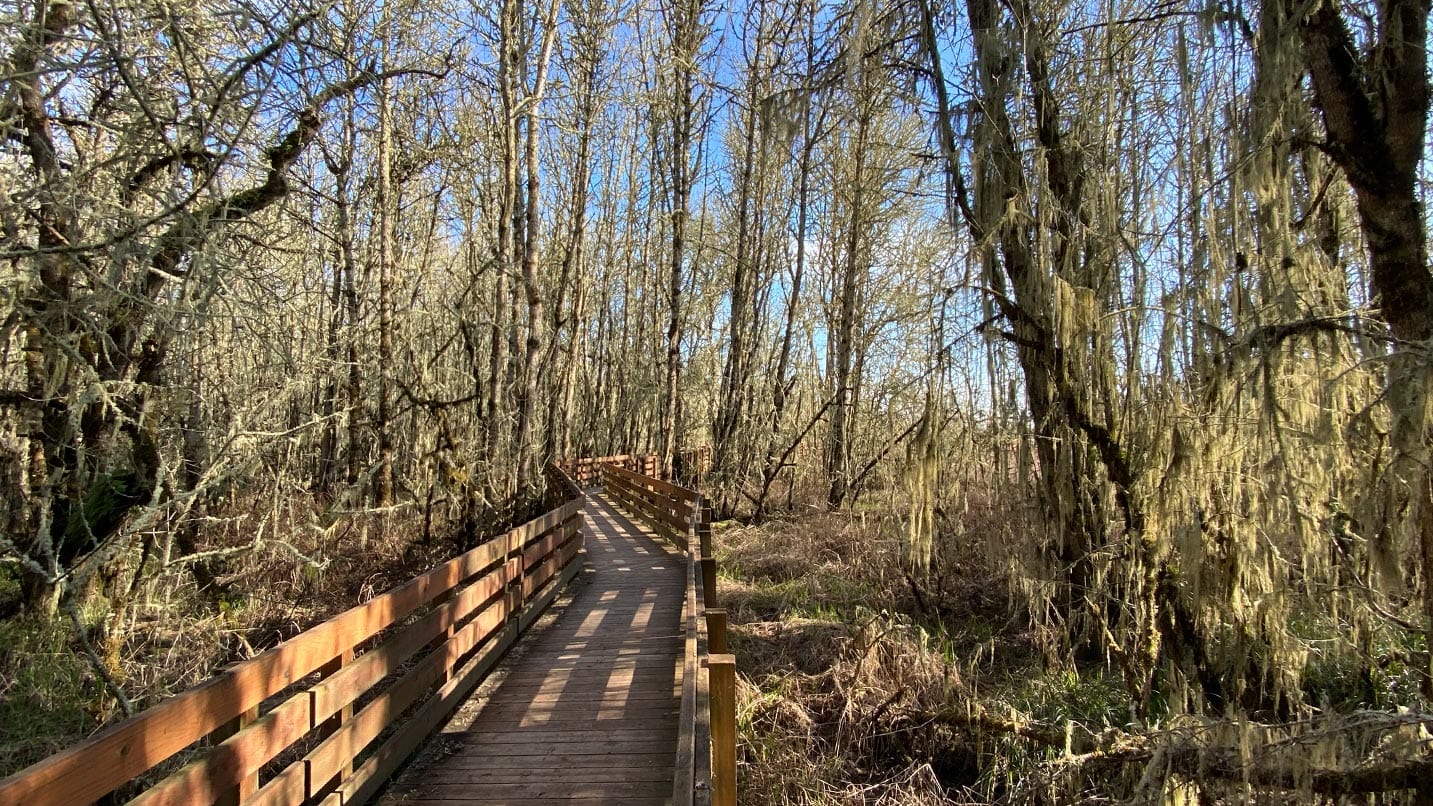
Refuge for Native History, Birds and Wildlife Near Corvallis
At William L. Finley National Wildlife Refuge, 11 miles south of Corvallis, you can stroll through one of the last remaining intact “wet prairies” in the Willamette Valley. Once common, wet prairies are massive meadows that are wet or underwater during a large portion of the year, and then dry out to some degree during the summer — prime habitat for migratory birds. The refuge was established initially as a wintering habitat for dusky Canada geese, so some areas are closed briefly during nesting season, between November and March. Year-round, there are still a number of trails to explore. Between the varied habitat, wildlife-viewing opportunities (particularly birding), semiremote location and 12 total miles of trails for hiking, this place is a real gift — for us and the geese. But wait, it gets better.
The other side of the refuge is home to another important Willamette Valley habitat: dry, upland Oregon white oak savanna, which used to occupy more than 400,000 acres of the valley. Development has dwindled that number to less than 5% of that, but at this refuge, you have the opportunity to experience both increasingly rare habitats in the same outing. In addition, the refuge boasts a rich cultural history. This region is the native home of the Kalapuyan people, who actively worked and maintained these habitats for thousands of years. More recent history can be found at the 1855 Fiechter House, one of the oldest buildings in Benton County. A boardwalk hike through the wetlands combined with a 1.2-mile loop through the savanna provides a pleasing escape. Winter is a particularly exciting time to visit, when waterfowl descend upon the refuge by the thousands.
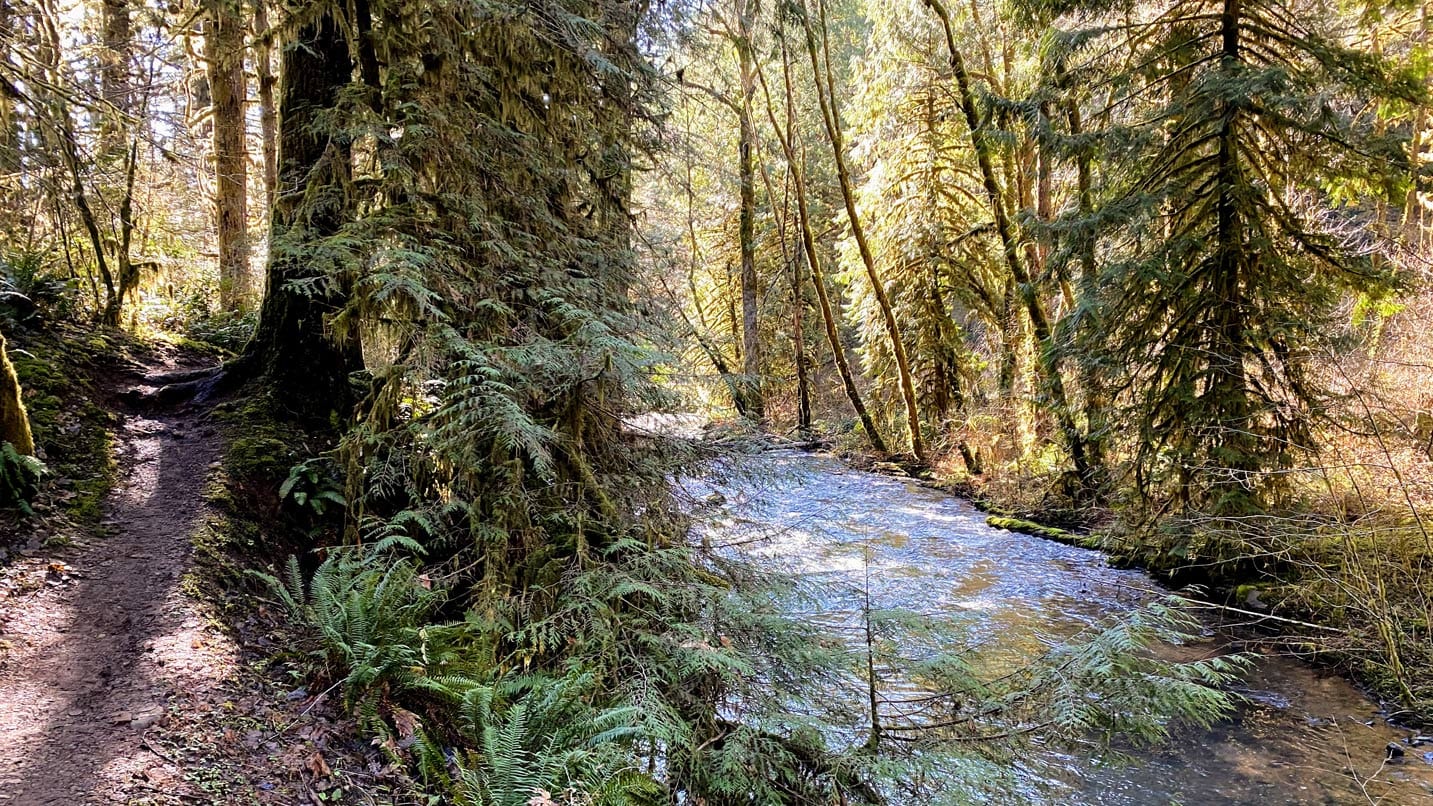
Backcountry Solitude Just Outside of Eugene
Sometimes I like to have my cake and eat it, too. I want a western Cascade forest experience — with a tranquil creek, moss and wise old trees for peaceful solitude — but I don’t want to drive too far to get it. I might want to barbecue, enjoy a picnic and perhaps even toss some horseshoes after my hike. At the Shotgun Creek Recreation Site, 24 miles northeast of Eugene in the Cascade foothills, you can have it all. (Note: Check for trail reopenings and conditions before you go.)
The namesake creek is remarkably scenic, the woods are lush, and the trails are very well cared for and a pleasure to hike. It can be a bit of a muddy track in the rainy season, but nothing hiking boots or sturdy waterproof footwear can’t overcome. Because of its location, the site doesn’t get a ton of visitors outside of the warmer months. Show up on a sunny winter weekday and you might not encounter another human soul. There are a number of hiking options available, thanks to a network of interconnecting loops. A great way to explore it all is by connecting the Shotgun Creek and Tiki Trail loops for a 3.4-mile hike that tours the breadth of the day-use area.
